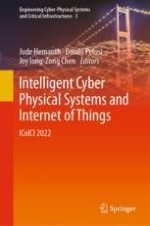This book highlights the potential research areas of Information and Communication Technologies (ICT), such as the research in the field of modern computing and communication technologies that deal with different aspects of data analysis and network connectivity to develop solution for the emerging real-time information system challenges; contains a brief discussion about the progression from information systems to intelligent information systems, development of autonomous systems, real-time implementation of Internet of Things (IoT) and Cyber Physical Systems (CPS), fundamentals of intelligent information systems and analytical activities; helps to gain a significant research knowledge on modern communication technologies from the novel research contributions dealing with different aspects of communication systems, which showcase effective technological solutions that can be used for the implementation of novel distributed wireless communication systems. The individual chapters included in this book will provide a valuable resource for the researchers, scientists, scholars, and research enthusiasts, who have more interest in Information and Communication Technologies (ICT).
Encompassing the contributions of professors and researchers from Indian and other foreign universities, this book will be of interest to students, researchers, and practitioners, as well as members of the general public interested in the realm of Internet of Things (IoT) and Cyber Physical Systems (CPS).
